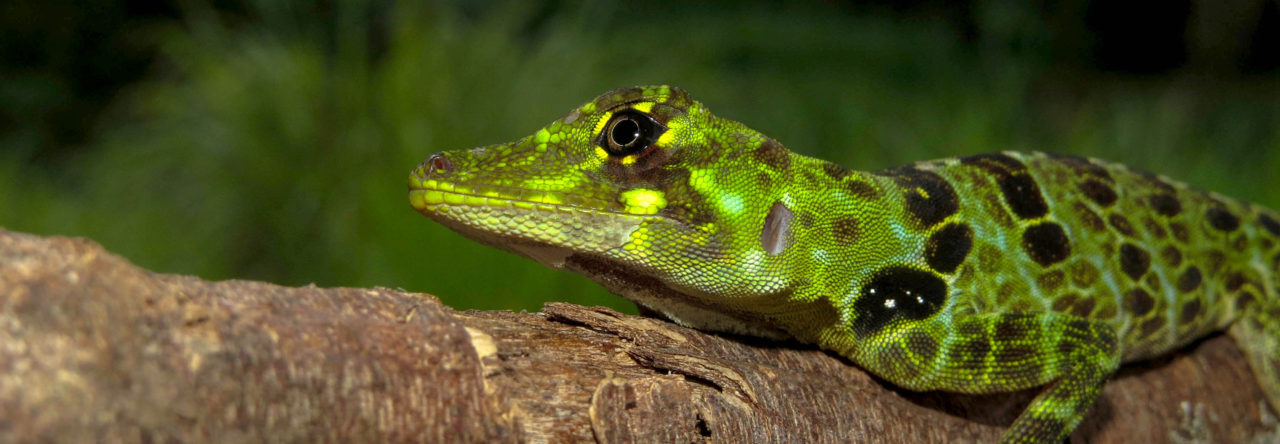*This post was written by David Delaney, a Ph.D. student in Fred Janzen’s lab at Iowa State University.*
Organisms must balance tradeoffs between performance, growth, immune function, and reproduction in order to maximize fitness. Adults and juveniles experience different life history pressures because juveniles are not reproductively mature, whereas adults should invest in reproduction. Thus, adults and juveniles may balance these life-history traits differently.
Dr. Jerry Husak of the University of St. Thomas presented on a study that he and undergraduate co-author Jordan Roy conducted to examine if adult and juvenile green anoles vary in resource allocation. To do this, 22 lizards were trained on a treadmill whereas 23 lizards were not. Training consisted of running lizards on a small pet treadmill 2 times per week. The incline was increased every two weeks for a period of 9 weeks to increase training intensity.
They found that training reduced the body mass of juveniles, which did not occur for adults. Training increased endurance capacity which also occurred in adults, however adults had a sex effect that juveniles did not. Training did not affect body length in juveniles, whereas it increased adult body length. Training eliminated the sex differences in juvenile immune function which did not occur for adults. Training increased hematocrit and heart ventricle mass which was also found for adults. In addition, juveniles exhibited very high variation in their response to training. Overall this study shows that juvenile green anoles balance these tradeoffs differently than adults, which likely reflects differences in the importance of certain life history traits throughout ontogeny.
- SICB 2018: Revisiting the Fitch-Hillis Hypothesis in Mexican Anoles - January 8, 2018
- Evolution 2017: Urban Anoles Sprint Faster on Smooth Substrates - June 26, 2017
- SICB 2017: New Insights into Pre- and Postcopulatory Selection in Anoles - January 10, 2017



Leave a Reply